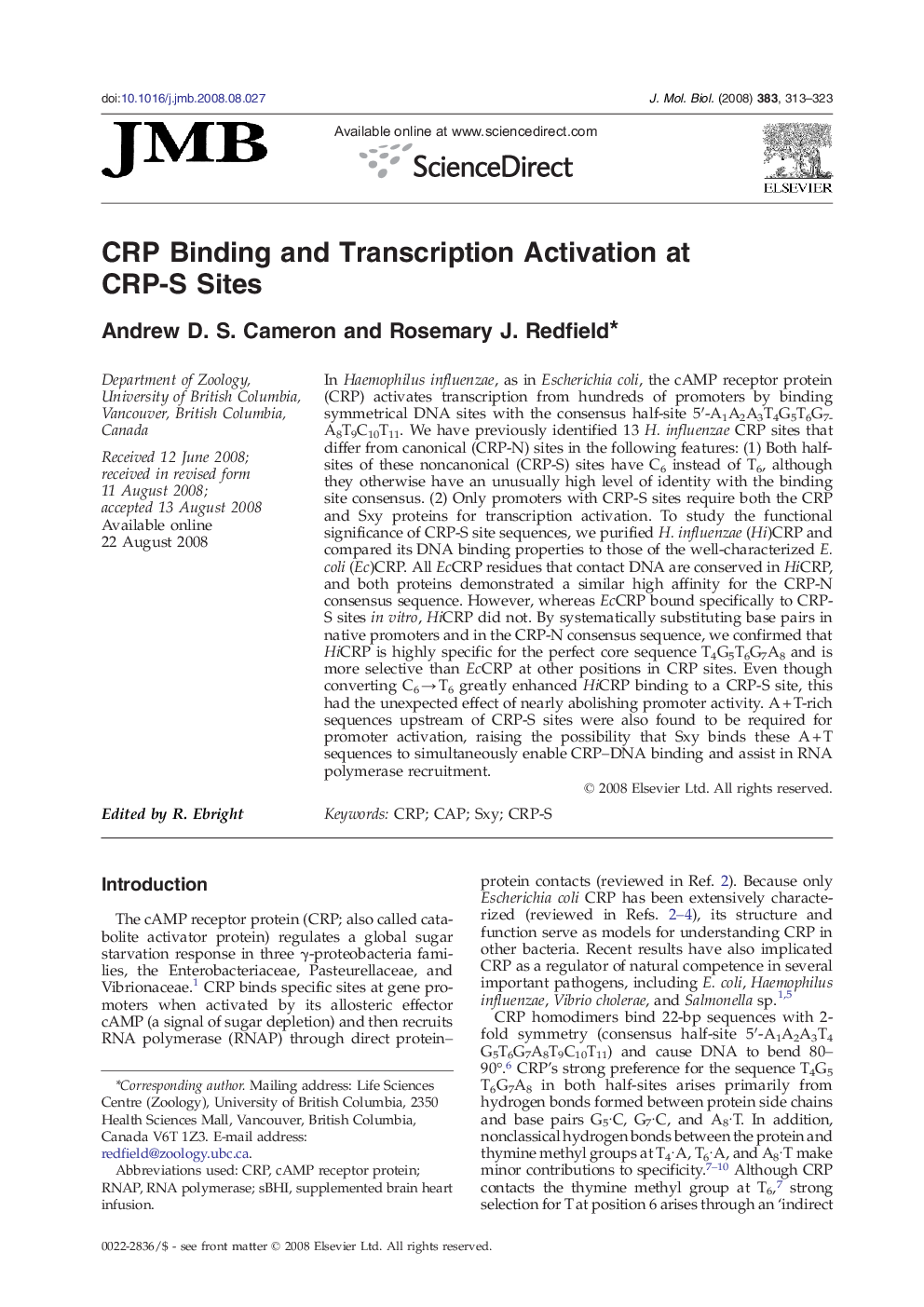| Article ID | Journal | Published Year | Pages | File Type |
|---|---|---|---|---|
| 2187131 | Journal of Molecular Biology | 2008 | 11 Pages |
In Haemophilus influenzae, as in Escherichia coli, the cAMP receptor protein (CRP) activates transcription from hundreds of promoters by binding symmetrical DNA sites with the consensus half-site 5′-A1A2A3T4G5T6G7A8T9C10T11. We have previously identified 13 H. influenzae CRP sites that differ from canonical (CRP-N) sites in the following features: (1) Both half-sites of these noncanonical (CRP-S) sites have C6 instead of T6, although they otherwise have an unusually high level of identity with the binding site consensus. (2) Only promoters with CRP-S sites require both the CRP and Sxy proteins for transcription activation. To study the functional significance of CRP-S site sequences, we purified H. influenzae (Hi)CRP and compared its DNA binding properties to those of the well-characterized E. coli (Ec)CRP. All EcCRP residues that contact DNA are conserved in HiCRP, and both proteins demonstrated a similar high affinity for the CRP-N consensus sequence. However, whereas EcCRP bound specifically to CRP-S sites in vitro, HiCRP did not. By systematically substituting base pairs in native promoters and in the CRP-N consensus sequence, we confirmed that HiCRP is highly specific for the perfect core sequence T4G5T6G7A8 and is more selective than EcCRP at other positions in CRP sites. Even though converting C6 → T6 greatly enhanced HiCRP binding to a CRP-S site, this had the unexpected effect of nearly abolishing promoter activity. A + T-rich sequences upstream of CRP-S sites were also found to be required for promoter activation, raising the possibility that Sxy binds these A + T sequences to simultaneously enable CRP–DNA binding and assist in RNA polymerase recruitment.
